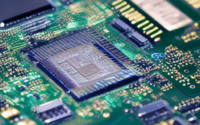Advancements in Brain-Machine Interfaces
Advancements in Brain-Machine Interfaces
Introduction:
Brain-machine interfaces (BMIs) have emerged as a revolutionary technology that bridges the gap between the human brain and machines. These interfaces enable direct communication and interaction between the brain and external devices, such as computers, robotic limbs, or even smart home systems. Over the years, there have been remarkable advancements in BMIs, leading to exciting possibilities for medical, research, and consumer applications.
Understanding Brain-Machine Interfaces:
Brain-machine interfaces work by capturing electrical signals from the brain and translating them into commands that can be understood by machines. This process involves utilizing various types of sensors, such as electroencephalography (EEG), electrocorticography (ECoG), or intracortical electrodes, to detect brain activity. The collected signals are then processed using advanced algorithms, enabling the extraction of meaningful information.
Medical Applications of Brain-Machine Interfaces:
One of the most significant areas where brain-machine interfaces have made an impact is in the field of medicine. BMIs have the potential to restore lost functionalities for individuals suffering from paralysis or neurodegenerative disorders.
For example, researchers have developed BMIs that allow paralyzed individuals to control robotic limbs or exoskeletons, providing them with newfound mobility and independence. Additionally, BMIs have been utilized in the development of neural prosthetics, allowing patients with limb amputations to control artificial limbs with their thoughts.
Moreover, BMIs have shown promise in treating neurological conditions such as epilepsy and Parkinson’s disease. By monitoring the brain’s activity and providing targeted stimulation, BMIs can help alleviate symptoms and improve the quality of life for patients.
Advancements in Research Applications:
Brain-machine interfaces have revolutionized the field of neuroscience by providing researchers with a deeper understanding of the brain’s complexity and functionality. These interfaces enable scientists to record and analyze neural activity with high precision, unraveling the mysteries of brain circuits and cognitive processes.
New advancements in BMIs have allowed researchers to investigate the neural basis of perception, memory, and even conscious awareness. By decoding brain activity patterns associated with certain tasks or experiences, scientists can gain insights into how the brain processes information and generates behaviors.
Furthermore, BMIs have facilitated groundbreaking research in neuroprosthetics, allowing scientists to develop devices that can restore or enhance sensory perception. For example, experiments with BMIs have enabled individuals with visual impairments to perceive simplified visual information through electrical stimulation of the visual cortex.
Consumer Applications and Future Potential:
Beyond medical and research applications, brain-machine interfaces hold great potential for consumer technologies. As advancements continue, BMIs could redefine human-computer interaction, leading to a new era of mind-controlled devices.
Imagine being able to control your smartphone or computer using your thoughts, eliminating the need for physical input devices. With BMIs, this futuristic scenario may become a reality in the not-so-distant future.
Additionally, BMIs could enhance virtual and augmented reality experiences by enabling direct communication between the brain and digital environments. This could revolutionize gaming, education, and even therapy by providing immersive and personalized experiences.
However, while the future of BMIs is promising, there are still challenges to overcome. Improving the accuracy and reliability of signal detection, ensuring long-term stability of implants, and addressing ethical concerns surrounding privacy and cognitive enhancement are some of the areas that require further research and development.
Conclusion:
Advancements in brain-machine interfaces have opened up a world of possibilities in medical, research, and consumer applications. From restoring mobility to paralyzed individuals and amputees to unraveling the complexities of the human brain, BMIs have the potential to transform our lives in profound ways.
As technology continues to evolve, we eagerly anticipate the exciting developments and breakthroughs that lie ahead, bringing us closer to a future where the mind and machines are seamlessly interconnected.


